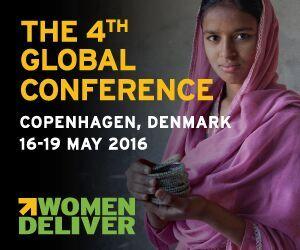
Five thousand researchers, practitioners, advocates and others are descending on Copenhagen for Women Deliver, the largest conference focused on the health, rights, and well-being of women and girls.
Much of what will be discussed aligns with CGD’s own work through our global health policy and gender and development programs, so we’re pleased to be attending and below, we’re pleased to share with you a few of the conference areas where we can add our voice.
Women’s economic empowerment: from trendy to timeless
Even more so than in past years, Women Deliver will include a specific focus on women’s economic empowerment and financial inclusion; one of the conference’s core themes is “Banking on Women’s Economic Empowerment.”
Along with senior fellows Charles Kenny and Mayra Buvinic, we’ve been working to ensure that women’s economic empowerment transitions from trendy to timeless, in part by harnessing the attention currently being given to the topic at high-level meetings and international conferences. To turn words into action, we must go beyond traditional interventions—which often take the form of skills trainings for individuals—and examine the broader constraints women face: pervasive gender biases in economic institutions and services. Along these lines, we’re updating the Roadmap for Promoting Women’s Economic Empowerment to build the evidence base of what works to increase women’s incomes and productivity.
We also want to know more about how to promote women’s financial inclusion specifically, so CGD is leading large-scale evaluations in Indonesia and Tanzania, designed to measure the impact of supply and demand side interventions on women’s ability to access and use mobile savings platforms.
Expanding women’s life choices through access to family planning
As in previous years, Women Deliver 2016 will focus on enabling women and girls to make autonomous reproductive choices through access to comprehensive sexual and reproductive health care—with important implications for their sexual health and rights. Yet there’s also reason to believe that a particular subset of reproductive healthcare—voluntary, convenient access to family planning—can have more extensive, dramatic implications for women’s economic and social equality. In a recent CGD note, we describe how the diffusion of contraceptives in the United States led young women to anticipate a life course where they could plan the timing of their pregnancies, encouraging them to invest more deeply in higher education and pursue professional opportunities within the labor force. The potential implications for women and girls in low- and middle-income countries are enormous, but still poorly understood. Our note lays out a research agenda to help better understand these connections. At Women Deliver, we hope to engage with the research and policy community on these important links.
We’re still learning how access to family planning expands women’s educational and economic opportunities. While those answers remain elusive, there are many concrete reasons to support voluntary, high-quality family planning services for all women and girls, and particularly underserved communities in low- and middle-income countries. To help more women and girls capture these benefits and exercise their reproductive rights, CGD recently convened a working group on alignment within the Family Planning 2020 (FP2020) partnership, looking at how international funders and technical partners can better allocate their resources to accelerate access to and improve the quality of family planning services. (We expect to release preliminary recommendations later this year.) At Women Deliver, we hope to hear the very latest on how FP2020 partners are working together to reach more women and girls and identify good practice and evidence that we can incorporate into our final report.
Measuring and evaluating the impact of programs targeting women and girls
Over the last month, we’ve been sharing our latest book, Millions Saved: New Cases of Proven Success in Global Health, with policymakers, practitioners, and the academic community. The book is a compilation of 22 case studies that showcase what works—and what doesn’t—to improve health in low- and middle-income countries. Several of the cases highlight impressive gains for women and girls. In Kenya and Pakistan, cash transfer programs helped keep girls in school and reduce early sexual debut and marriage. In Mexico, installation of cement floors in poor households made mothers remarkably happier. And in India, the Avahan program reached sex workers with HIV prevention interventions, reducing their risk of contracting the deadly disease.
Yet over the last few weeks we’ve heard one question time and again: why doesn’t the book include a program on sexual and reproductive health? Our (perhaps unsatisfactory) answer has been that no reproductive health or family planning programs met the core criteria for inclusion: programs had to be large scale, ongoing for several years, and have had a measurable impact on health—determined by an impact evaluation. It is this last criterion where many programs fell short.
In the hopes that the next volume of Millions Saved will feature family planning or reproductive health, we’re excited for the many Women Deliver sessions focused on data, measurement, and evaluation, particularly the panel on how to evaluate the effectiveness of programs targeting women and girls. New documentation on how to measure our impact is published all the time, so we’re keen to hear about the latest research and methods—and perhaps to nudge the community toward broader use of rigorous impact evaluation.
We’ll be blogging throughout the conference with updates on what we’re hearing in panel sessions and on the sidelines. Stay tuned for more!
Disclaimer
CGD blog posts reflect the views of the authors, drawing on prior research and experience in their areas of expertise. CGD is a nonpartisan, independent organization and does not take institutional positions.





